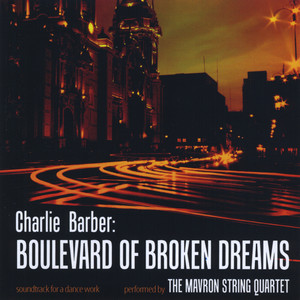
- 歌曲
- 时长
简介
The idea of a town or city square is almost as old as civilisation itself. Sitting at the heart of a community, it is a place of gatherings, markets, political rallies and other events that focus and bring people together. Surrounding it will be buildings of civic and cultural significance together with shops, cafes and social meeting places. But the city square and its streets is also a powerful metaphor for individual hopes and aspirations that often lie shattered within the proud facades that form its shell. This dichotomy was memorably encapsulated in the song Boulevard of Broken Dreams, from the 1934 film Moulin Rouge. Referring to Sunset Boulevard in Los Angeles, the song’s title has taken on an iconic significance, spilling into the fields of art, literature, film and music. Those who have performed it include Juan García Esquivel, Marianne Faithfull, Hanoi Rocks, Joaquin Sabina and Green Day. Its title was also used for Paul Alexander’s biography of James Dean, the 1988 film starring John Waters, an underground comic by Kim Deitch and a short story from Harlan Ellison's 1978 collection Strange Wine. The title Boulevard of Broken Dreams was also used for a Gottfried Helnwein variation on Edward Hopper’s painting Nighthawks, featuring Marilyn Monroe, Humphrey Bogart, James Dean and Elvis Presley in place of Hopper's anonymous characters. In the context of the present work (a score for string quartet by Charlie Barber) the music takes its starting point from “Plaza de Armas” (Place of Arms), the name given to the main square in many Latin American cities. The name is derived from these spaces’ traditional function as a refuge from where arms would be supplied to its citizens in case of an attack. The titles of the various “numbers” that make up the score, however, draw on an altogether wider range of cultural references, taken from many city squares, or centres, throughout the world ranging from Los Angeles to Delhi, from Istanbul to Lima. The string quartet medium is one of the most concentrated in music with a tradition stretching back 250 years. Much of Charlie Barber’s music has a similar concentration drawing on many traditional musical techniques, including canon (by augmentation and diminution), passacaglia, variation and polyrhythm. In his score, the quartet often moves outside its essentially European guise, using non-western melodic material from North India, Turkey, Tunisia, Brazilian rhythms and more recent techniques including Hip-Hop. The quartet’s usual four string instruments (two violins, viola and cello) are also supplemented with samples of percussion and other sounds. As already mentioned, each of these takes its title from a different city centre “square” throughout the world. Consequently, some of these draw on melodic material from the same country – for instance, a Tunisian melody in Place de la Victoire (Track 4), a North Indian “Khyal” (classical) melody in Red Fort, Delhi (Track 14), a traditional Turkish tune (in 10/8) in Taksim Square, Istanbul (Track 12), or a North East Brazilian dance called “Afoxe” in Plaza de Mayo, Buenos Aires (Track 5). Other locations use other subtle cross-references in their use of musical material: the multi-layering of four string quartets in Times Square, New York, symbolising the city’s love affair with the new and technological (Track 13); a strictly worked series of canonic procedures for Red Square, Moscow, possibly reflect the severity of the regime that gave the location its name (Track 6); a dizzying series of cross-rhythms and multiple pulses reflect the manic activity at the centre of People’s Square, Shanghai (Track 9) and, in Piazza Navona, Rome, old and new interact when a traditional waltz is disrupted by Hip-Hop rhythms (Track 8). The results, as with the many city centres of the world, is an intriguing blend of past and present, cross-cultural resonances and the individual voices of those who can be found on their streets. (notes by Peter Reynolds)






